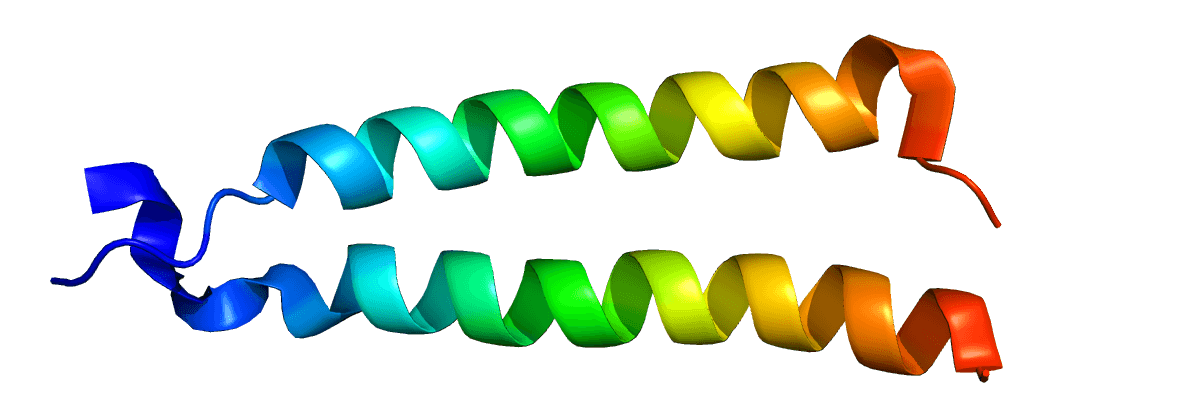Custom MemPro™ Tyrosine Kinase Binding Proteins Services
Creative Biostructure provides custom MemPro™ gene-to-structure services for tyrosine kinase binding proteins (TYROBPs). Our skilled experts perform the production, purification and characterization of recombinant TYROBPs. It is well known that protein tyrosine kinases function as the regulators of cell division, differentiation, adhesion, migration and metabolism. Protein-tyrosine kinases can be activated directly or indirectly to respond extracellular signals and translate the environmental information into the activation of intracellular signal transduction pathways.
 Figure 1. The structural model of TYROBP protein. (https://en.wikipedia.org/wiki/TYROBP)
Figure 1. The structural model of TYROBP protein. (https://en.wikipedia.org/wiki/TYROBP)
The tyrosine kinase binding protein (TYROBP) encoded by the TYROBP gene (also known as the DAP12 gene) is a transmembrane signaling polypeptide, which functions as an adapter protein in human. TYROBP is also called DNAX-activation protein 12 (DAP12) or killer-activating receptor-associated protein (KAR-associated protein), which is expressed by natural killer (NK) cells and myeloid cells. TYROBP protein has an immunoreceptor tyrosine-based activation motif (ITAM) in its extracellular region and discovered in various cells including myeloid cells, lymphoid cells and cells from the bone marrow or immune system. TYROBP is distributed on the cell surface and interacts with other proteins (such as zeta-chain associated protein kinase and spleen tyrosine kinase), involved in activating signal transmission and related with the killer-cell inhibitory receptor (KIR) family members. It has been found that the biological function of TYROBP protein is the regulation of signal transduction, bone modeling, brain myelination, and inflammation. For instance, human studies have reported that genetic defects of TYROBP induce a rare syndrome that can finally cause bone cysts and presenile dementia. Mutations in TYROBP may result in polycystic lipomembranous osteodysplasia with sclerosing leukoencephalopathy (PLOSL), known as the Nasu-Hakola disease. The receptor of TYROBP, triggering receptor expressed on myeloid cells 2 (TREM2), can also cause PLOSL. We offer you services on the expression, chemistry analysis, production of crystallization chaperones and computational modeling of TYROBPs. Human TYROBPs can bind noncovalently with receptors of the CD300 family to form CD300-TYROBP complexes that lead to cellular activation.
As an excellent player in membrane protein research, Creative Biostructure can provide various MemPro™ gene-to-structure services for membrane protein family, including the identification, isolation, purification, stabilization, and crystallization of membrane proteins of your interest. Please feel free to contact us for a detailed quote.
References:
K. Wilhelmsen, et al., (2004). Purification and identification of protein-tyrosine kinase-binding proteins using synthetic phosphopeptides as affinity reagents. Mol. Cell Proteomics, 3(9): 887-895.
M. Colonna (2003). DAP12 signaling: from immune cells to bone modeling and brain myelination. J. Clin. Invest., 111(3):313–314.
M. C. Gingras, et al., (2002). TREM-1, MDL-1, and DAP12 expression is associated with a mature stage of myeloid development. Mol. Immunol., 38(11): 817–24.
TYROBP. (https://en.wikipedia.org/wiki/TYROBP).